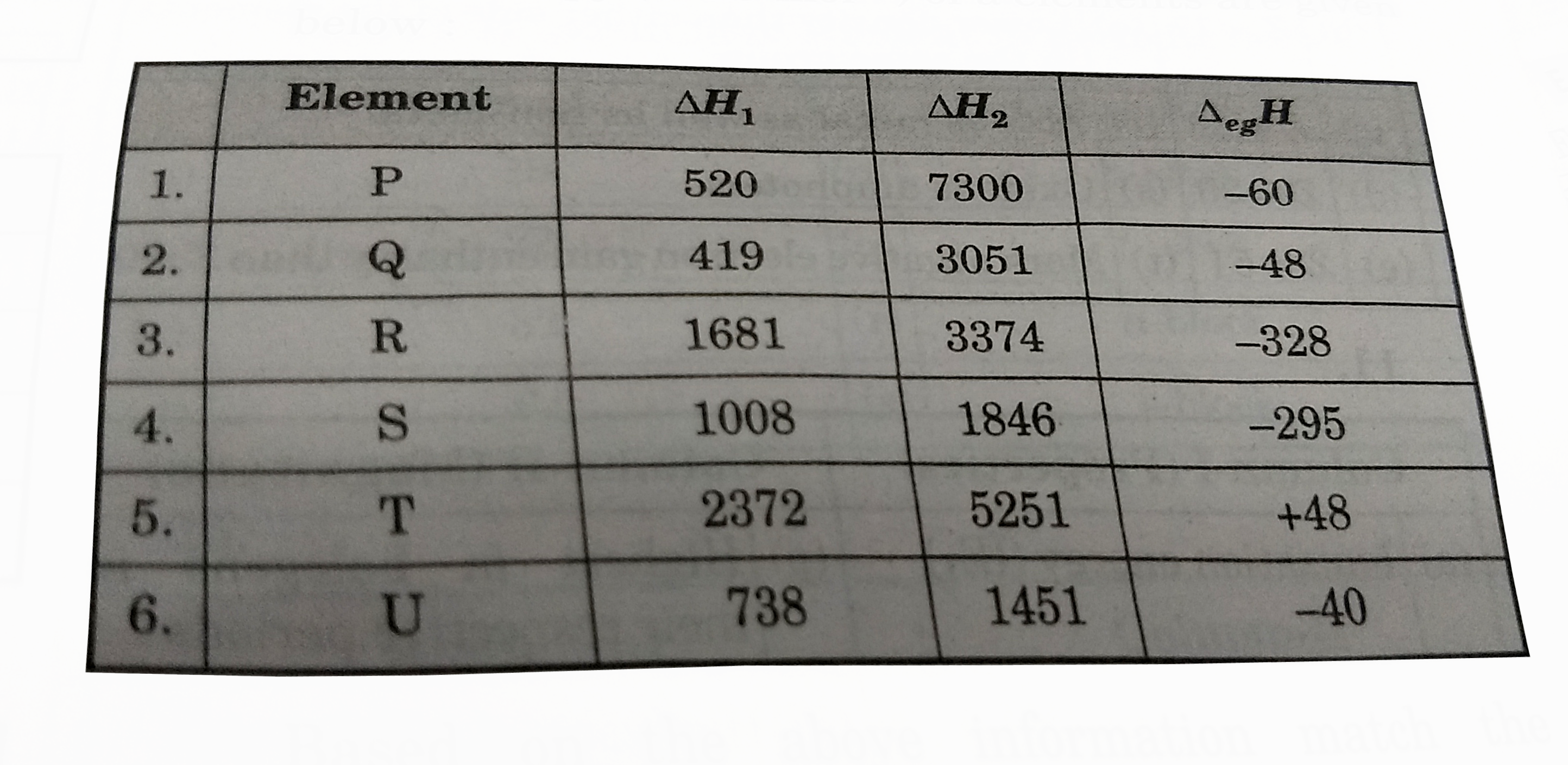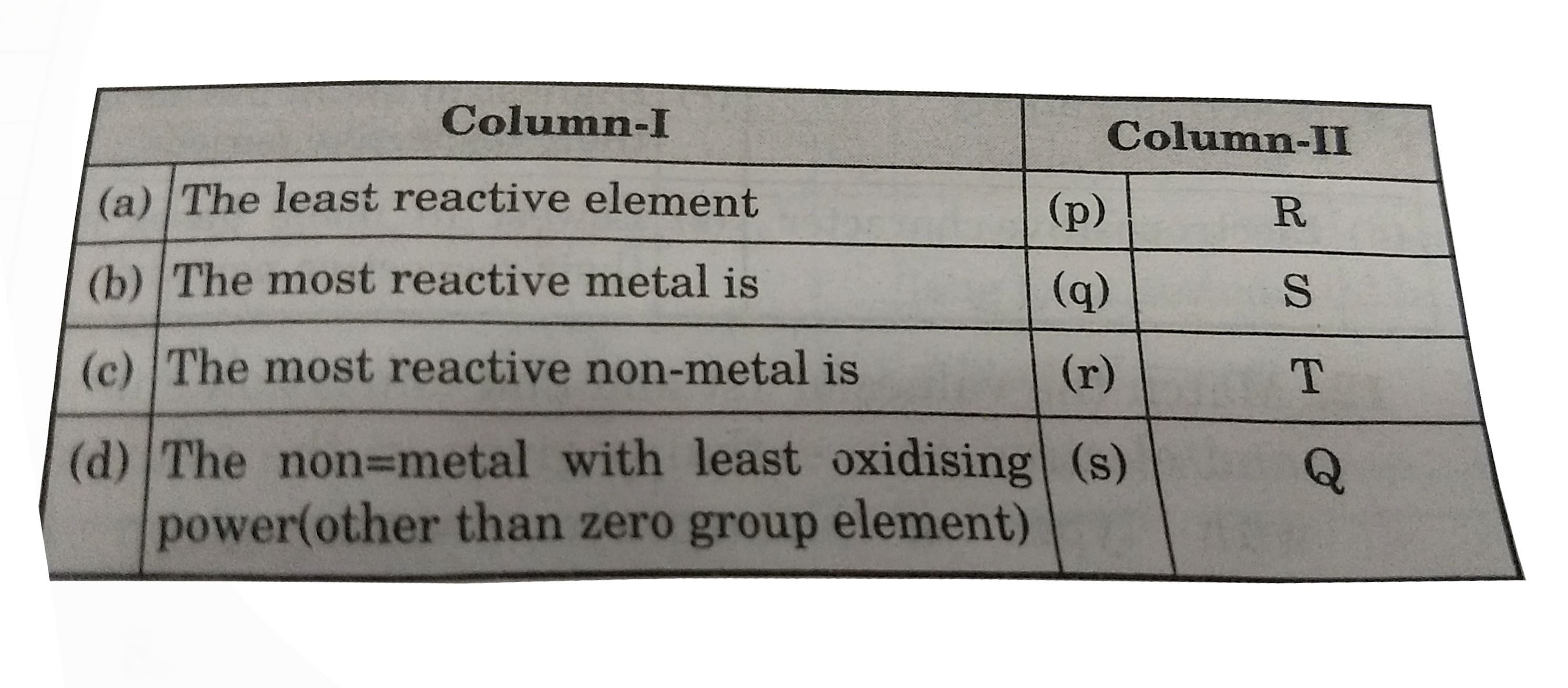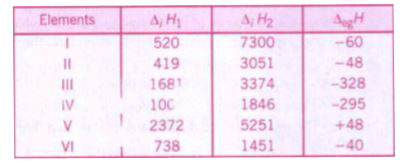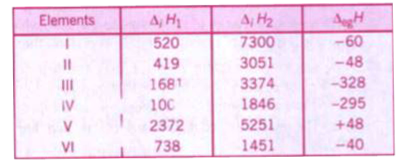Ionisation enthalpy (ΔiH kJ mol−1) for the elements of group 13 follows the order.
B > Al > Ga > In > Tl
B < Al < Ga < In < Tl
B < Al > Ga < In > Tl
B > Al < Ga > In < Tl
The correct Answer is:D
On moving from B to Al, all the ionisation ethalpies decreases as expected and this decrease is due to an increase in atomic size and shielding effect.
On moving from Al to Ga, the ionisation enthalpy increases sightly, because on moving from Al to Ga, both nuclear charge and shielding effect increase but due to poor shielding by d-electron in Ga, effective nuclear charge on valence electron increases resulting in d-block contraction, that's why ionisation enthalpies increase.
On moving from Ga to ln, again there is slight decrease in ionisation enthalpies due to increased shielding effect by additional ten 4d electrons, which outweighs the effect of increased nuclear charge
On moving from ln to Tl, ionisation enthalpies show the increase again because fourteen 4f electrons shield valence poorely (order of shieling effect s > p > d > f) and so effective nuclear charge increases, consequently ionisation ethalpies increase.
Topper's Solved these Questions
- THE P-BLOCK ELEMENTSBOOK - NCERT EXEMPLAR ENGLISHCHAPTER - THE P-BLOCK ELEMENTSEXERCISE - Short Answer
14 Videos
- THE P-BLOCK ELEMENTSBOOK - NCERT EXEMPLAR ENGLISHCHAPTER - THE P-BLOCK ELEMENTSEXERCISE - Matching
3 Videos
- STRUCTURE OF ATOMBOOK - NCERT EXEMPLAR ENGLISHCHAPTER - STRUCTURE OF ATOMEXERCISE - All Questions
55 Videos
- THE S-BLOCK ELEMENTS BOOK - NCERT EXEMPLAR ENGLISHCHAPTER - THE S-BLOCK ELEMENTS EXERCISE - Long Answer Type Questions
8 Videos
Similar Questions
The first ionisation enthalpy (ΔiHo−) values of the third period elements, Na,Mg and Si are respectively 496,737 and 786kJmol−1. Predict whether the first ΔiHo− value for Al will be more close to 575 or 760kJmol−1? Justify your answer.
View SolutionThe first ionisation enthalpy values (in kJ mol−1) of group 13 elements are

How would you explain this deviation from the general , trend?
View Solution
Knowledge Check
Ionisation enthalpy (ΔtHlinkJmol−1) for the elements of group-13 follows the order
AB>AI>Ga>In>TIBB<AI<Ga<In<TICB<AI>Ga<In>TIDB>AI<Ga>In<TI
The first (ΔH1) and second (ΔH2) ionisation enthalpies (in kJmol−1) and the (ΔHeg) electron gain enthalpy (in kJmol−1) of a elements are given below:

Based on the above information match the following columns.

View SolutionThe first (Δi,H1) and the second (Δ,H2) ionisation enthalpies (in kJ mol−1 ) and the (ΔegH) electron gain enthalpy (in kJ mol−1 ) of a few elements are given below :

Which of the above elements is likely to be :
the least reactive element?
View SolutionThe first (Δi,H1) and the second (Δ,H2) ionisation enthalpies (in kJ mol−1 ) and the (ΔegH) electron gain enthalpy (in kJ mol−1 ) of a few elements are given below :

Which of the above elements is likely to be :
a reactive metal
View SolutionDiscuss and compare the trend in ionisation enthalpy of the elements of group 1 with those of group 17 elements.
View SolutionThe first ionization enthalpy (ΔiH) values of the second period elements Li,Be and C are respectively 520,899 and 1086kJmol−1. Predict whther the first ΔiH value for B will be more close to 690 or 990kJmol−1?
View SolutionThe first ionization enthalpy (ΔtH) values of the third period elements, Na,Mg and Si are respectively 496, 737 and 786kJmol−1. Predict whether the first ΔtH valye for Al will be more close to 575 or 760kJmol−1? Justify your answer.
View SolutionThe second ionisation enthalpy of the elements of group 1 are higher than those of elements of group 2. Explain.
View Solution
